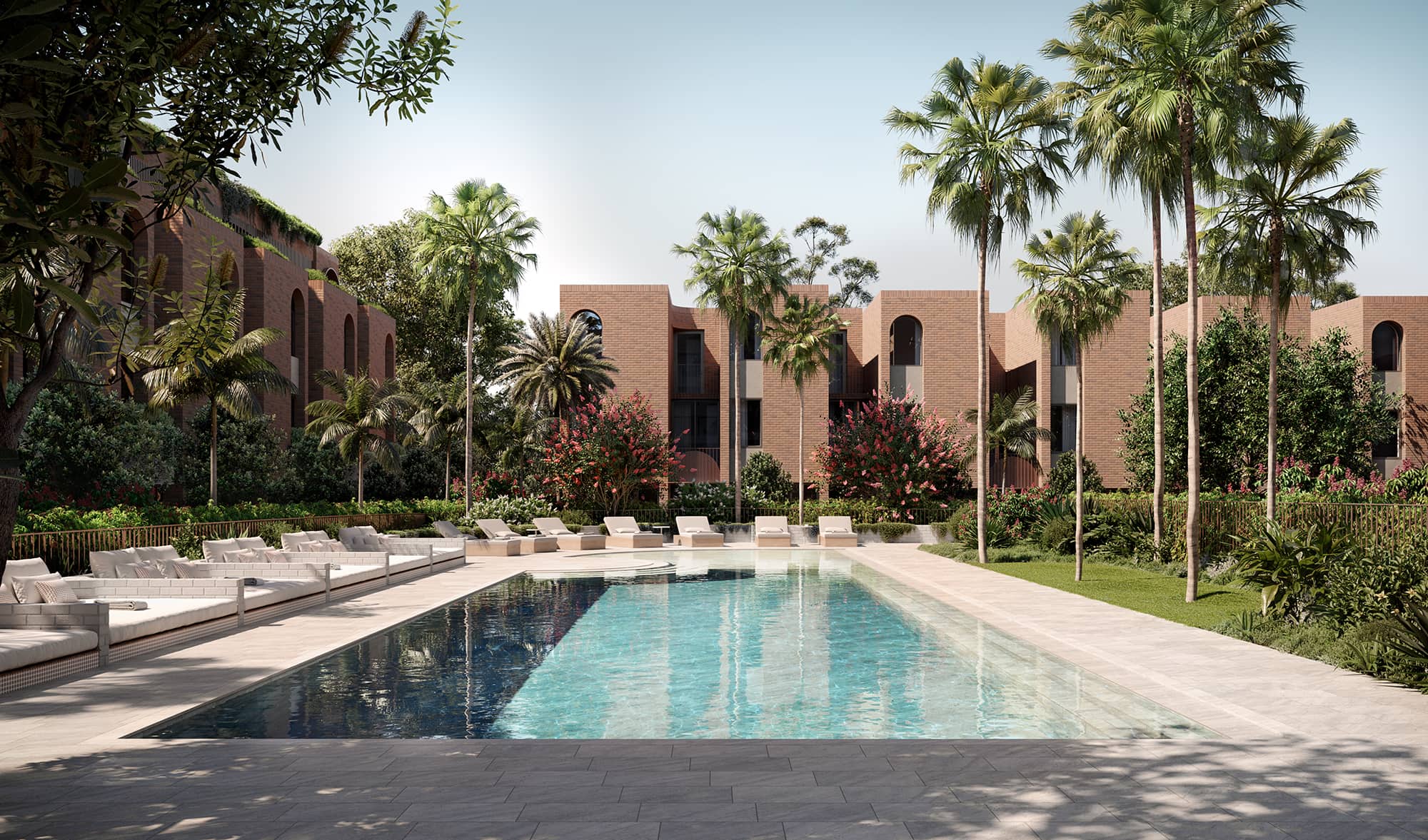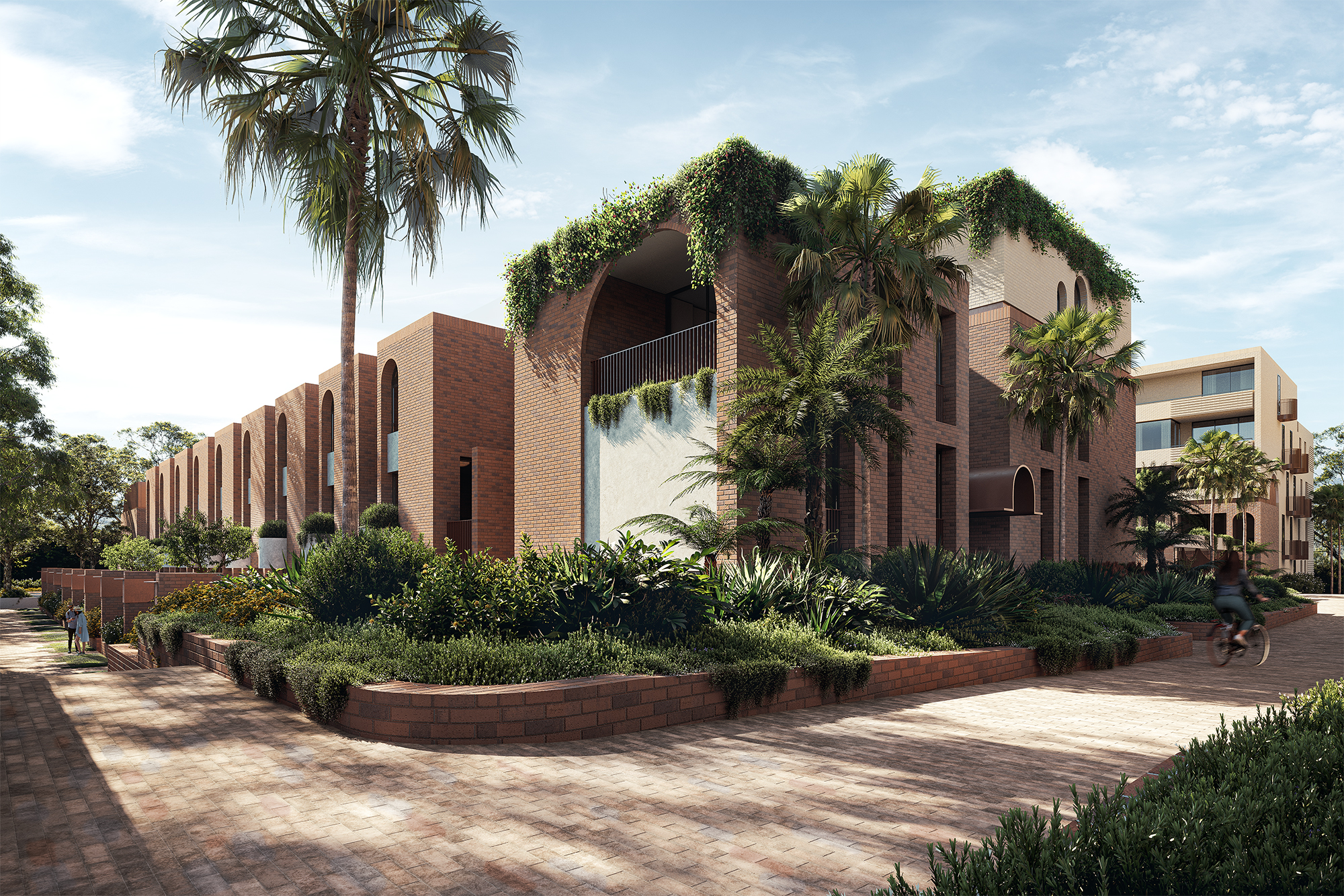Immersed in greenery and set within the heritage-listed suburb of Ashbury, this collection of luxury residences is surrounded by contemplative gardens and communal spaces.
In a suburb known for its proliferation of post-war brick bungalows, neat gardens and tree-lined streets, the introduction of townhomes and apartments called for an empathetic developer capable of respecting Ashbury’s inherent charm.
As one of just two neighbouring spaces available for renewal in the heritage suburb, Coronation Property has the rare opportunity of bringing a collection of luxury residences to the tightly held pocket in Sydney’s inner west.
Teaming up with the architects at SJB and landscape architects at 360 Degrees Studio to design Ashbury Terraces, Coronation Property proudly launched 59 terrace garden homes and three penthouses neighbouring W H Wagener Oval this month.
“We take our commitment to developing and building in a conscious and considerate manner very seriously,” says Aras Labutis, Coronation Property’s head of urban transformations. “With Ashbury Terraces, we strived to ensure the project felt both timeless and relevant for a location with such historical significance.”
The adjoining oval was once home to a brick quarry and this past life provided inspiration for SJB’s principal architect and director, Adam Haddow.
“We selected brick as the hero of the design, a way to link the project with the past and become part of its surrounds,” he says. “We wanted to honour the craft of brickwork through beautiful detailing and facades.”
The idea of the garden was another focal point for Haddow throughout the design process.

“Ashbury is a lovely garden suburb, a hidden pocket in the inner west, set within a heritage conservation area,” he says. “This sense of the garden suburb was a key point of inspiration for us.”
It was also instrumental in 360’s landscape design which will celebrate scent, fruit, texture, water and dappled shade with an eclectic mix of exotic and native species. Some plant choices echo the established greenery in the neighbourhood, like tibouchina, crepe myrtle and frangipanis while others contribute to the next phase of Ashbury’s story, says 360 director Daniel Baffsky, and include ornamental natives, hardy succulents and whimsical grasses.
Baffsky says interconnected walking paths, linking quiet contemplative garden spaces and communal spaces like the pool and garden allow for a range of interactions between residents.
“We believe strongly in the power of landscape as a neighbourhood connector,” he says. “People coming together in a landscape, whether organised or by chance, is a very natural way to build face-to-face relationships in a world with increasingly less opportunity to do so.”
A key highlight at Ashbury Terraces is the central garden, an oasis of palms and flowering shade trees with brick planter walls and timber seating wrapping around the pool. Baffsky says the collaborative design process will allow the landscaping to have an immediate contribution to the amenity of the project.
“Our contemporary lifestyle now demands high-quality gardens and landscapes to be integral to how we live at home, at work and everywhere in between,” he says.
For Haddow, the outdoor spaces contribute to the uniqueness of the project and are a key element in ensuring the development improves as it ages.

“As the landscape matures, it adds another layer to the design,” he says. “Great places to live are about abundant sunlight, feeling the breeze inside, a great connection to your garden, generosity of space. The vertical dwellings allowed us to amplify these attributes and add a layer of joy and delight.”
Haddow says it will take time for the new development to blend and merge into its surrounds, but the locals will be welcome to access Ashbury Terraces via a series of links and connections through the site, between Milton Street and the oval.
“As time passes, and people move through the site, incidental connections are made and a sense of community is fostered and the development improves the social fabric of the area,” he says.
Labutis says it’s been a long but worthwhile journey to the project’s launch.
“That’s because as a team we’ve taken the time to make something special,” he says. “Together we worked meticulously to ensure every green space connects seamlessly to the built environment while respecting the area’s unique historical significance.”
Labutis says the response from the market has been “overwhelmingly positive” with particularly strong interest from buyers in Ashbury’s neighbouring suburbs who appreciate the rarity and design of the development.
Read the original article as written by Kate Farrelly for Domain, here.
